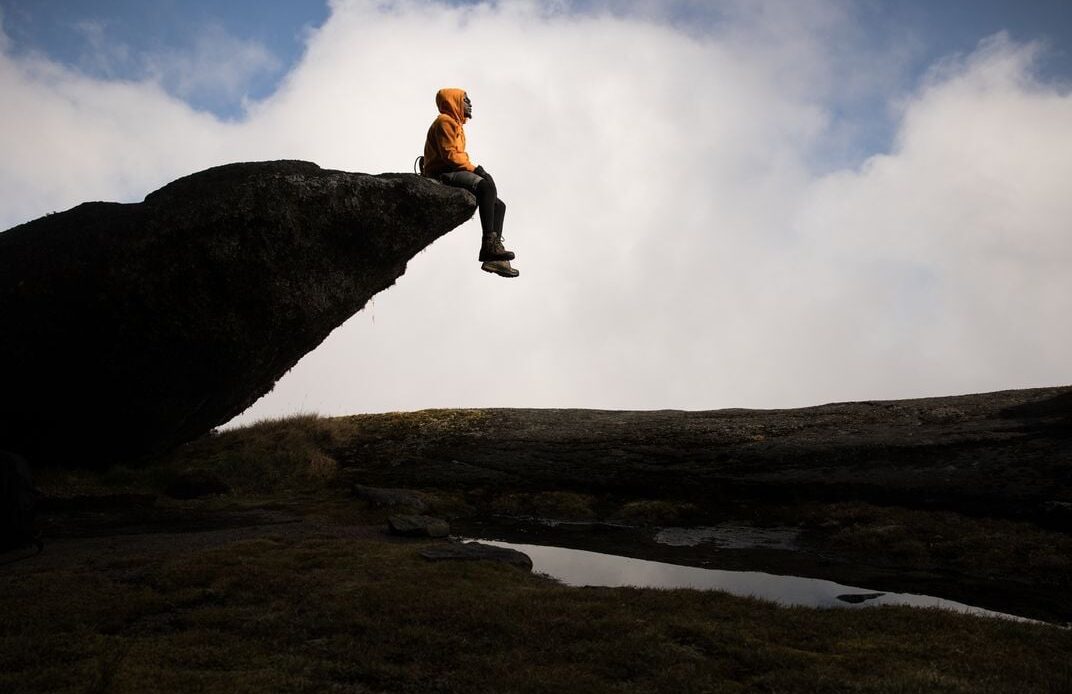Mount Mulanje, located at the southern end of Malawi in southern Africa, covers close to 400 square miles of steeply forested gorges and ancient stone summits. Rising more than 5,000 feet above the surrounding savanna, the massif was formed 130 million years ago, when magma, having cooled slowly beneath the surface of the earth, transformed into masses of crystallized granite. Over eons, the softer sedimentary rocks around the immense bulge of hard stone washed away. Today, the massif, known as an inselberg, German for “island mountain,” is a world unto itself—smoothly rounded stone mountains blanketed in green moss and black lichen, waterfalls tumbling from precipitous heights on all sides, rivers carving down through foothills of primeval forest and vanishing in the plains.
Kondwani Chamwala, a mountaineer, educator and specialist with the Mulanje Mountain Conservation Trust (MMCT), a few hundred feet from the summit.
Thoko Chikondi
Mount Mulanje has the tallest rock wall on the African continent. Known as the West Face of Chambe Peak, it extends 5,500 feet base-to-summit. Its scale is hard to grasp. Imagine Yosemite’s El Capitan and Half Dome stacked on top of each other, with a forested terrace between the lower and upper walls.
As an avid alpinist, I traveled to Malawi to climb a new route on this wall. Because Mulanje is in the tropics, the granite has not been subjected to the timeless freeze-thaw cycles that split stone at higher latitudes and altitudes; consequently, there were no cracks, which meant the surface was glass-smooth and could not be ascended without placing bolts for protection. After a week of climbing with James Garrett, a veteran alpinist from Utah, we had drilled more than 30 bolts and completed a 2,000-foot route—Garrett had named it Passion and Pain—up the featureless granite to reach the terrace. After we pulled up onto flat ground, we expected to find a forest, but all the trees had been chopped down and carried off the sides of the mountain. The goliath upper wall loomed above us, but Garrett was set to return home, so we left the upper half of the West…
Click Here to Read the Full Original Article at Travel | smithsonianmag.com…
